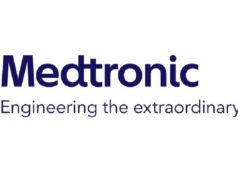 Royal Philips and Medtronic Neurovascular today announced a strategic advocacy partnership that will see the two companies attempt to raise awareness around potential health and economic benefits for patients, their families, and societies, regarding improved access to timely stroke diagnosis and treatment.
Royal Philips and Medtronic Neurovascular today announced a strategic advocacy partnership that will see the two companies attempt to raise awareness around potential health and economic benefits for patients, their families, and societies, regarding improved access to timely stroke diagnosis and treatment.
In addition, Philips and Medtronic Neurovascular have further expanded and strengthened their partnerships with the World Stroke Organization (WSO) by joining the newly established WSO Advocacy Coalition. This WSO-led coalition brings together diverse stakeholders, including healthcare professionals, patient groups, and policymakers, to develop coordinated strategies that address the global burden of stroke. The two companies are already working with the WSO to share the latest research, exchange best practices, drive improvements and advance the stroke policy agenda, according to a press release.
Philips and Medtronic Neurovascular are advocating for a global network of stroke care centres that can deliver comprehensive care—from early diagnosis to rehabilitation—with their joint efforts focusing on three key areas:
- Raising awareness by promoting public understanding of stroke symptoms and the importance of seeking immediate care
- Improving access to treatment by expanding the number of stroke-ready hospitals and providing training to healthcare professionals on the latest interventional techniques
- Leveraging technology and innovation by utilising advanced imaging and digital health tools to create integrated stroke care systems that support early diagnosis, effective treatment, and post-procedure monitoring
The collaboration will be highlighted at the ongoing World Stroke Congress (WSC; 23–26 October, Abu Dhabi, United Arab Emirates), where Philips and Medtronic Neurovascular will host a Stroke Advocacy roundtable session. This initiative builds on their joint presence at events like the United Nations General Assembly (UNGA) and the World Health Assembly, where they emphasised the need for increased investments in stroke care infrastructure and supportive policy changes, the release adds.
“Our new partnership with Medtronic Neurovascular and the ongoing collaboration with the WSO highlights our shared commitment to transforming stroke care. With advanced technologies and a focus on collaboration, the time to act is now to ensure that stroke patients have timely stroke care—no matter where they live,” said Carla Goulart Peron, chief medical officer, Philips.
“Stroke care is a race against time and, by joining forces with Philips, we can help accelerate access to life-saving treatments like mechanical thrombectomy. Together, we are advocating for necessary investments in stroke care infrastructure to reduce the burden on patients and healthcare systems globally,” added Signe Haughton, chief of staff/senior director of medical and government affairs, Medtronic Neurovascular.
The high-level side event hosted by the WSO, Philips and Medtronic Neurovascular at the recent UNGA in New York, USA emphasised “the urgent need to address global disparities in stroke care—the number two cause of mortality in the world”. It stressed the importance of prevention, risk factor control, access to timely treatment and rehabilitation in reducing the global burden of stroke. The event was joined by Ministry of Health leaders from eight nations, representatives from the UN, the G20 and G7 Health Development Partnership, leading neurointerventional physicians, and the Business Council for International Understanding (BCIU).
“Every two seconds, someone on Earth has a stroke, yet only a small percentage of our global population has access to mechanical thrombectomy—a minimally invasive treatment which can potentially reverse stroke, if performed quickly enough. We need to ensure that where you live doesn’t dictate whether you live,” said Atul Gupta, Philips’ chief medical officer for diagnosis and treatment, who joined Haughton in providing opening words outlining today’s clinical and economic challenges, and opportunities, in stroke treatment, as well as sharing a vision for the future.









